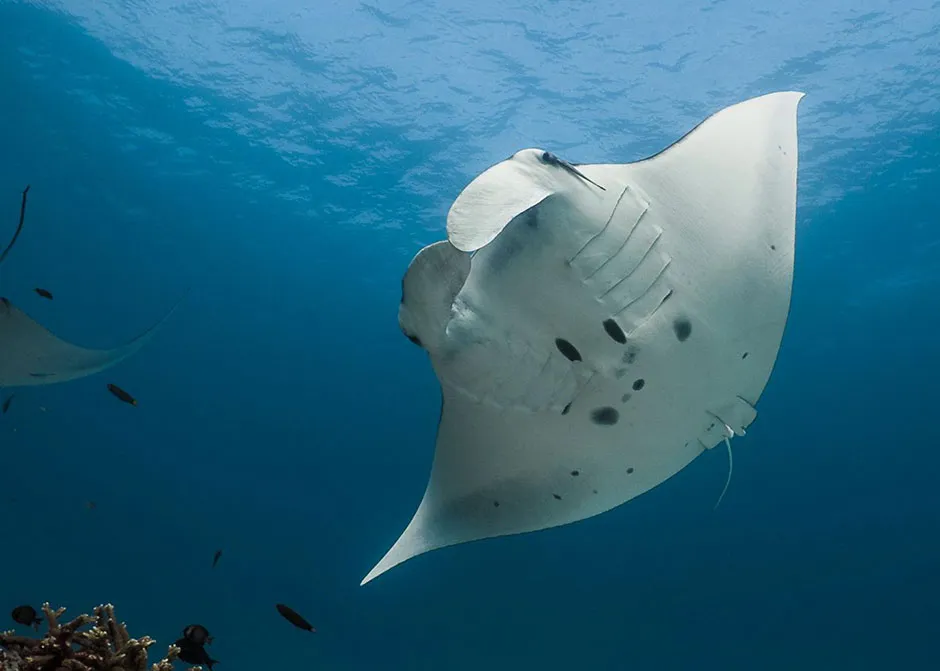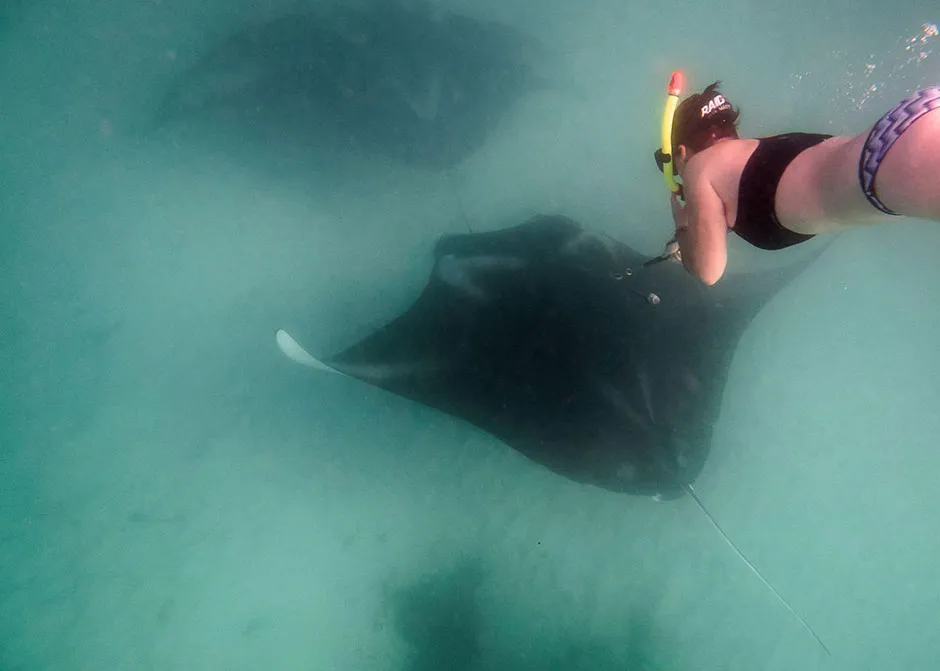Reef manta rays (Mobula alfredi) like hanging out in marine protected areas, according to new research carried out by scientists in Australia.
Reef mantas are one of the world’s biggest ray species, inhabiting tropical and subtropical regions of the Indian and West Pacific Oceans. Their habit of frequenting shallow waters around coastal reefs makes them an iconic animal for ecotourism, but they are also a target for fishermen, who hunt them for their gill plates, which are in high demand for traditional medicine.

The ocean giants are listed as ‘vulnerable’ on the IUCN Red List of Threatened Species, but their migration movements are little understood. A team of researchers from Australia wanted to change that in order to help with conservation efforts.
They used satellite tags and more than a decade’s worth of photographic data to identify 1,121 individual animals that live and travel between Ningaloo Coast and Shark Bay – two UNESCO World Heritage Areas on Australia’s western coast.
Read more about fish:
- Ultra-black deep-sea fish have skin that can absorb 99.9 per cent of light
- World’s longest animal discovered in Australian waters
- What if we banned fishing?
“Satellite tags allow us a short peek into the secret lives of these animals to understand where else they frequent outside of key tourism locations, while photographic identification helps us track visitation over longer periods,” explained lead author Amelia Armstrong, from the University of Queensland.

Although reef mantas are capable of migrations of at least 1,100km, the team found that many of the individuals they studied had a long-term affinity to locations in Ningaloo Marine Park (which is within the World Heritage Area), with 9.8 per cent of the individuals remaining there for more than 10 years. The greatest distance a ray travelled after tagging was 700km.
“This is a great discovery for the reef manta rays on this coastline, because these protected areas provide the legislative framework needed to underpin further management action,” said Armstrong.
Reader Q&A: Do fish feel pain?
Asked by: Keith Anderson, Bradford
It’s an old adage that fish don’t feel pain. Their brains are too small and simple – or so the story goes. But evidence is stacking up to the contrary.
In 2003, researchers at the Roslin Institute near Edinburgh discovered sensory nerves in bony fish that allow them to detect pain in a similar way to birds and mammals, linking their skin and other areas of the body to the brain. The same team went on to find that, when injected in the lips with mild acid or bee stings, rainbow trout rocked their heads and rubbed their lips against the aquarium tank. Given painkillers, the trout behaved normally again.
Many other studies reveal aspects of fish suffering, including in cramped fish farms where some salmon stop feeding and show signs of depression, such as high levels of the stress hormone cortisol.
Read more:
